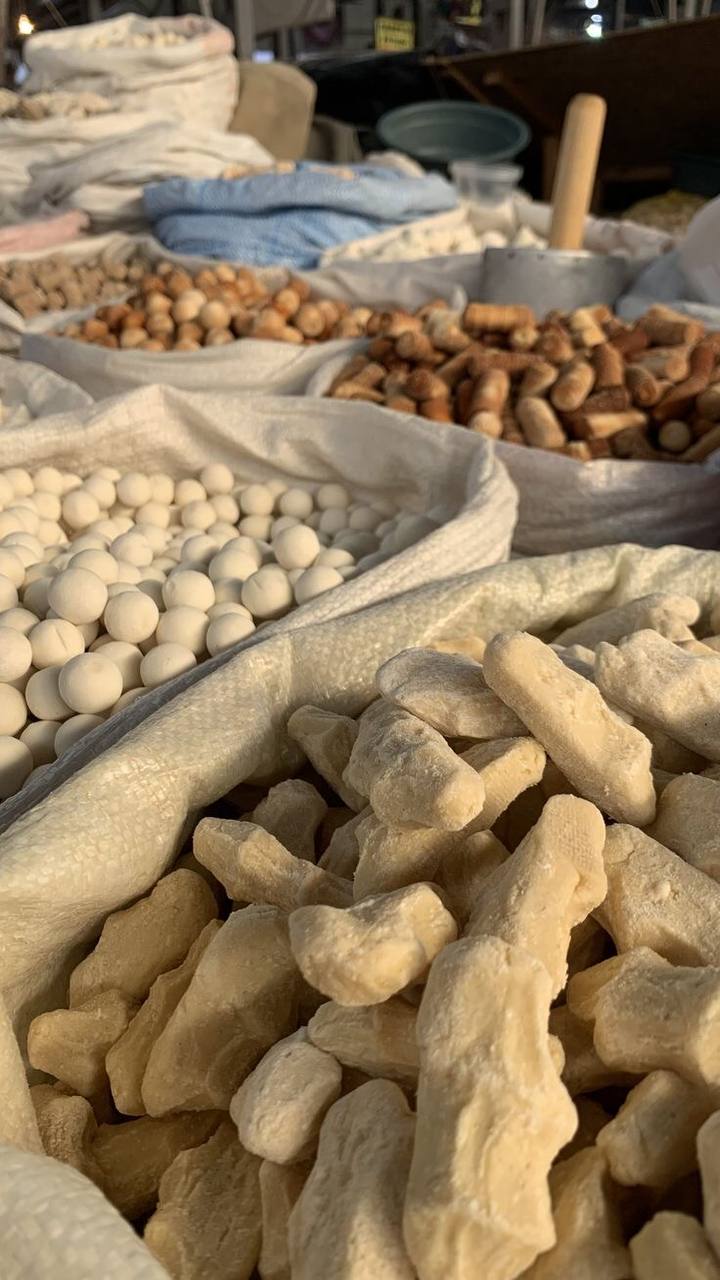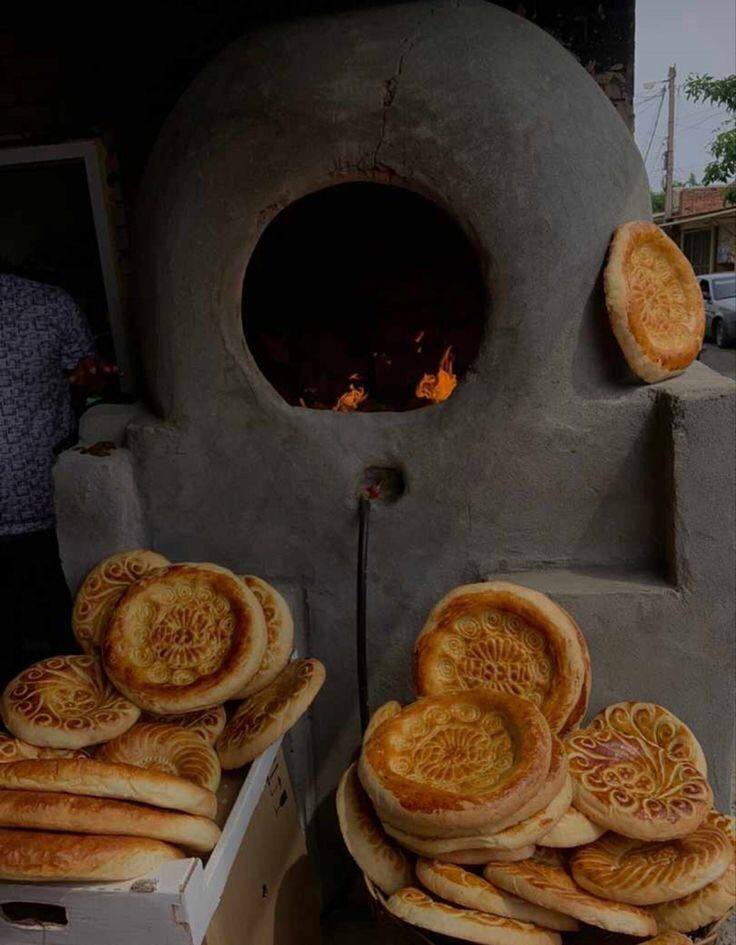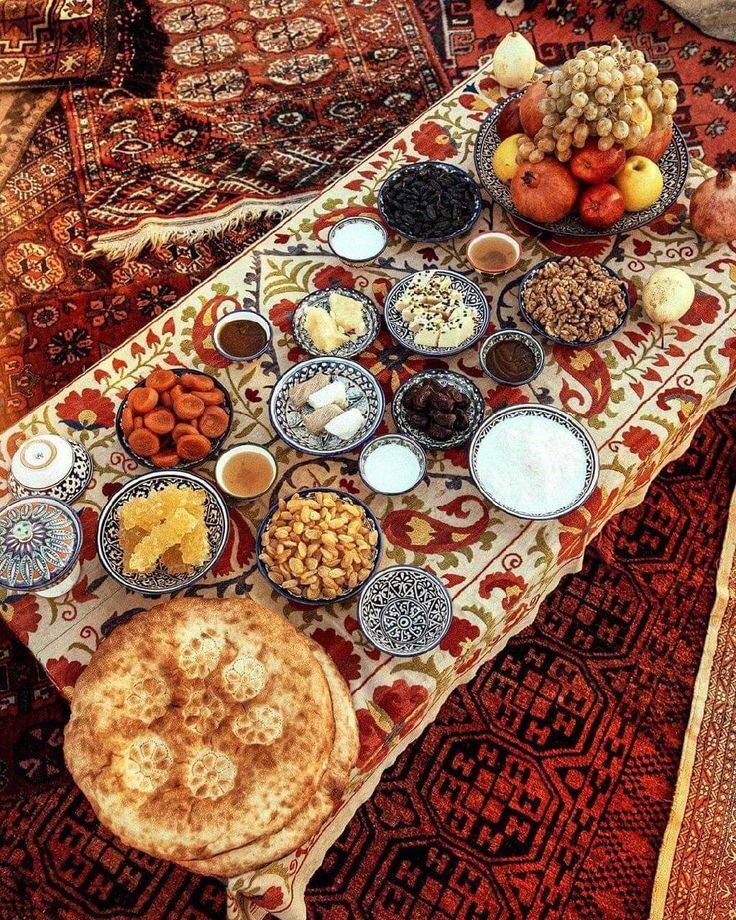
Kyrgyz plov, also known as "Osh" or "Osh Paloo," is the national dish of Kyrgyzstan. It typically includes rice, carrots, onions, and lamb or beef, seasoned with spices like cumin, coriander, and garlic. Prepared by layering ingredients in a pot called a "kazan" and slow-cooking over an open flame, allowing flavors to meld. Often served at special occasions and gatherings, symbolizing hospitality and community sharing. Reflects Kyrgyz culinary traditions, with recipes and techniques passed down through generations. Enjoyed worldwide for its delicious flavors and cultural significance.
Kurut is a traditional dairy product commonly consumed in Central Asia, particularly in Kyrgyzstan. It is made by fermenting yogurt or milk until it forms small, dry, and tangy balls. Kurut is rich in probiotics, making it beneficial for gut health and digestion. Due to its long shelf life and portability, kurut is a popular snack for travelers and nomads in the region. It is also often used as a seasoning or ingredient in various dishes, adding a unique tangy flavor.


Tandyr nan is a type of traditional Central Asian flatbread baked in a clay oven called a tandyr. It is a staple food in many Central Asian countries, including Uzbekistan, Kyrgyzstan, and Tajikistan. Tandyr nan is typically made from simple ingredients such as flour, water, salt, and yeast, resulting in a soft and fluffy texture with a slightly crispy crust. The bread is often enjoyed with meals or used to scoop up other dishes, such as stews, kebabs, or dips. Baking tandyr nan in a clay oven imparts a unique smoky flavor, enhancing its taste and aroma.
"Dastorkon Jayuu" is a term in Kyrgyz culture that translates to "open dastarkon" or "public dining table." It refers to a tradition where food is placed on a communal table, often outdoors, for anyone to partake in freely. This practice embodies the spirit of generosity and community in Kyrgyz hospitality, where individuals and families share their meals with neighbors, passersby, and those in need. "Dastorkon Jayuu" reflects the ethos of inclusivity and solidarity within Kyrgyz society, where the act of sharing food fosters connections and strengthens social bonds. It is a manifestation of the culture's values of kindness, compassion, and communal support, where no one is left hungry or excluded.


Boz uy, also known as "yurt" or "ger," is a traditional nomadic dwelling used by the Kyrgyz people and other Central Asian nomadic cultures. It is constructed with a collapsible wooden frame covered with felt or skins, making it portable and well-suited for nomadic lifestyles. Boz uy is designed to withstand harsh weather conditions, providing warmth in winter and ventilation in summer. The circular shape of the boz uy symbolizes unity and harmony with nature, reflecting the spiritual and cultural values of its inhabitants. Despite modernization, boz uy remains an integral part of Kyrgyz identity, often used for cultural events, celebrations, and as a symbol of national heritage.